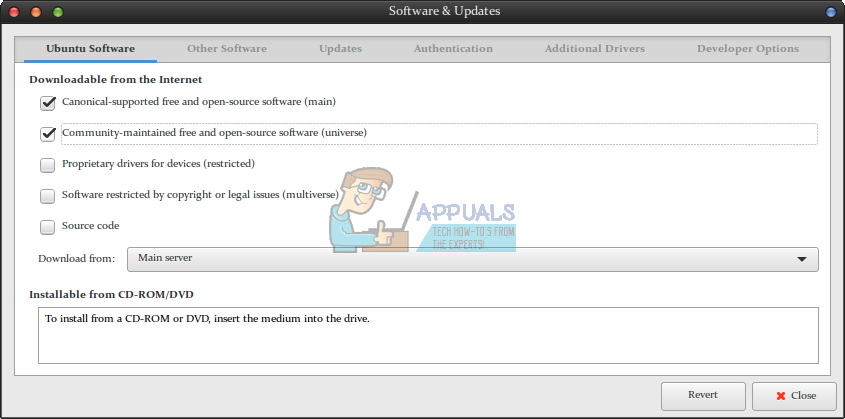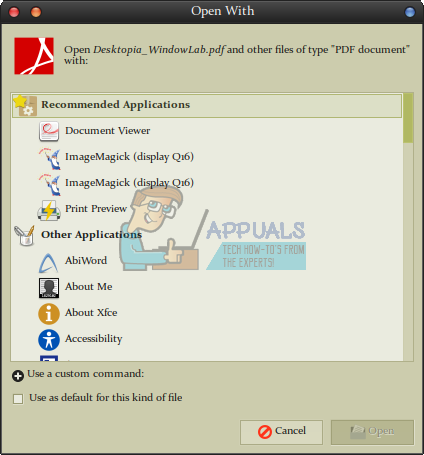Either of these methods was unnecessarily complicated for many people, though it did give users the opportunity to review the program’s innards before they ran it. Canonical’s official repositories now include qpdfview in the Universe repository. All users of Ubuntu 15.10 or higher can easily download it with a simple apt-get command. Those who’ve never tried to install the software before should go straight to the second method, but those who might have attempted to download it previously should try the steps in the first before continuing on.
Method 1: Removing Old qpdfview Installation Repositories
You only need to do this if you’ve ever tried to install qpdfview before it was included in the official Ubuntu repositories, or if you accidentally followed older instructions that told you to add qpdfview repositories to the apt protocol. These were once needed, but aren’t anymore. If you’ve never tried installing it before and never added any repositories, and then proceed straight to Method 2. You’ll otherwise need to continue with these steps to make sure it carries out a proper installation later. Type at the CLI prompt and push the enter key. You might be asked for your administrator password. You’ll be given a list of repositories once you’ve approved it. Use the Page Up and Page Down keys to navigate through the list. If you see any repositories named ppa:adamreichold/qpdfview-dailydeb or ppa:b-eltzner/qpdfview, then place the cursor at the beginning of the line they’re on and add a # symbol to the front of it. Once you’ve commented out the lines in question, push Ctrl and O at the same time to save the file. Use Ctrl and X at the same time to return to the CLI prompt. Type and push the enter button, then type ls and push the enter key again. You might see a few lines about Google Chrome or Skype if you have these programs installed, but make sure none of them have anything to do with the qpdfview software. Users who have neither Chrome nor Skype installed that don’t have qpdfview repositories here will see nothing. If you see an offending qpdfview repository, however, then you’ll want to type sudo rm followed by the name of the file that’s there. Make sure to run sudo apt-get update once you’ve finished making changes to get rid of the old repositories. If you ever had a full installation of qpdfview before, then you should run sudo apt-get purge qpdfview before proceeding to drop the last vestiges of the old software.
Method 2: Installing qpdfview on Ubuntu
Universe repositories are included in Ubuntu by default, so you shouldn’t have any problem working with them. If the following steps don’t seem to work, then open Software & Updates from the Dash or KDE menu and make sure that (main) and (universe) have check boxes next to them. Run apt-get update from a terminal if you have to select them, but only after approving the changes and closing Software & Updates.
You may get a window telling you that “The information about available software is out-of-date,” which you can safely ignore if you’re comfortable using the terminal to run apt-get update instead of selecting a button.
Run sudo apt-get install qpdfview once you’re ready to go. The program will install and configure itself automatically. You’ll need your administration password to go ahead with the installation. You should find that qpdfview adds an application Dash menu shortcut automatically. If it doesn’t, then open in a file manager and make sure that you have a file there pointing to it. Run sudo apt-cache policy qpdfview if it’s not there to check the installed version of the software. You might not have installed it at all. In that case, you’ll need to run the command a second time.
Upon opening the software, you might find that it’s functionally not much different from Evince, but you can drag any PDF to it from a Nautilus, Thunar or another file manager window to create a new tab. You can also try the Ctrl+N or Ctrl+T keyboard shortcut to create new tabs. Ubuntu may keep the previous PDF associations you may have had, but you can force the GUI to load PDF files with qpdfview by default. Right click on a PDF document you have stored somewhere in your home directory, and then select the “Open With…” function. Scroll down until you find qpdfview and select it along with the “Use as default for this kind of file” option. Click on open and browse your document at your leisure.
The next time you open a PDF document, it will load up with qpdfview by default. If you ever need to use Evince or another PDF reader in the future, then you can always select it in the context menu again. If you’re using a PC keyboard, then you can also use the Menu button between the Super and Ctrl keys on the right-hand side to perform the same action. You’ll need to use the cursor keys to navigate the context menu unless you have vi-like key bindings enabled. Even if you don’t have vi-like keyboard bindings, however, you might want to try using the H, J, K and L keys once you have the program loaded. These might allow you to navigate a document much as they do in one mode of the vi and vim editors. As long as these functions now work correctly, you can assume you have the program properly installed on Ubuntu. Since qpdfview depends on the existence of some outside code, you might want to try running sudo apt-get install -f or sudo apt-get -f install to repair any broken dependencies if you find that one or more of these functions don’t seem to work correctly or if you had some difficulty with the initial installation. Otherwise, you’re good to go at this point.
Ubuntu 18.04 LTS Bionic Beaver Officially Available for Ubuntu, Kubuntu,…How to: Create an Ubuntu Bootable USB on Mac, Windows or UbuntuUbuntu 16.04.5 LTS Released on Heels of Ubuntu 18.04 LTS, Bundles All Past…SOLVED: “Unable to initialize audit layer: Permission denied” bug in libvirt-bin…







